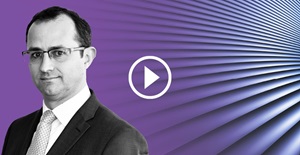Boardrooms recognise the importance of People and Culture but most don’t have the skill set to deal with it effectively. That is the conclusion of a new report by Women On Board UK.
The report called ‘Hidden Talent’ studied over 1,000 firms across the FTSE All-Share and AIM listings. Over 80% of firms said they believe People and Culture is a top-level, or significant concern, but only 27% are directly engaging with executive experts at board level. 40% consider the quality of discussion on People and Culture in their boardroom to be weaker than on other topics.
People Management reports on this and highlights a mismatch between the high level of importance firms place on People and Culture and the skill set of the board. There were just two executive board members across the FTSE All-Share who have an HR or people and culture job, while 68% had roles focusing on operational efficiency. Fiona Hathorn, CEO and co-founder of Women on Boards says, ‘The responsibilities of the board have continued to evolve over the past decade and yet the focus remains on traditional skill sets such as finance, operations and CEO experience. Skills such as social responsibility, human resources or marketing, show negligible presence in the boardroom.’ It follows - ‘boards need to re-think how they tackle, what is, one of the most pressing issues facing organisations today.’
Among those 1,000 firms are a number of our clients and many of them are doing precisely that – rethinking how they tackle this issue – conducting a culture review across the business Helping a number of them with that is D&I consultancy Brook Graham alongside Pinsent Masons’ Equality Law team – so what does that work involve and has it been successful? To find out I caught up with Brook Graham’s Kieron O’Reilly:
Kieron O’Reilly: “This is an approach that's relatively new for us because we're part of the Equality Law Team at Pinsent Masons. So, Brook Graham is the diversity and inclusion consultancy and the Equality Law Team are the lawyers. What we found is that where we bring those two things together, and we want to work to make change happen, that we needed a client to be operating from top down. So, in this example, what we're finding is that where people are working collectively - so from the board, right through all forms of leadership - where they have a driver to work together to make some of the changes they want to achieve for the good in their organisation, we're applying these two aspects to come up with a way that the organisation can achieve its aims across the organisation and it fits with all different parts of it from the board right down to, for example, in a recent case, a union. That convening power means that all of these parts of an organisation work together, and they work effectively on the same goal. What we're seeing is, within six months, some of the changes that a couple of organisations have already started this programme, have achieved things in a period that might have taken a year. So, it's that collective working together to achieve a goal that we're seeing as a bit of a breakthrough, really, in some of the aspects when it comes to achieving diversity and inclusion goals.”
Joe Glavina: “Can you tell me about the work you’ve recently done with a client on this.”
Kieron O’Reilly: “Yes, certainly. So, this is where we began with the board and we wanted to do a culture review and that's looking at the organisation from top down. That includes policy and process as well as people. So, we spent some time meeting with the organisation, getting to know it well, and then reported back to the board on what the organisation was from a cultural aspect, and how that fitted with its aim and its purpose and then from that, practical actions were selected. Each of those were then put into place at the different levels of the organisation. So, what was put in place to support unions, what was put in place to support employees across the organisation varied, but was tied to the same goal, same as the board. The board approved it and, as a result, we've now seen a bit of restructuring going on that's been positive for all. We've seen a lot of achievement towards the organisation's aims and its goals but, most importantly, we've seen the employee satisfaction survey has increased by nearly 32% and that's in a period of six months. Now that was specifically done because of this work, but it was a way of measuring the change. That's quite dramatic for doing a structural change, for doing an organisational development piece of work, at that level.”
Joe Glavina: “In that case where did HR fit in?”
Kieron O’Reilly: “So, it was it was led by the chair of the board, it was led by the chief executive, and then the third person in the project team was the Head of HR because this is, essentially, about people and the systems and the process of the go round it support the people. So, HR had a very central function to understand what the cultural views were saying, to understand how that applied to the organisation and then to lead the policy changes they wanted to see to affect the outcomes they were trying to get. So, HR were one of the three central decision makers in this project.”
Joe Glavina: “Given the lack of an HR presence in most boardrooms, I can see how this tool can help with that. Anything else to add, Kieron?”
Kieron O’Reilly: “I think one of the greatest aspects of this work is that it connected the organisation in a way that may not have been done before, right from the board through to someone who's just started as an apprentice, because all of their voices came together, they all had a representative connection, and they're all working towards the same goal. So, it aligned people to work collectively and it's quite an impressive way of seeing people come together and understanding what they're trying to achieve through their own business or their organisation and I think that was quite powerful.”
If you would like to know more about Organisational Culture Reviews please contact the Brook Graham Team – their email address is [email protected] – or contact your usual Pinsent Masons’ adviser.
LINKS
- Link to Hidden Talent report
Out-Law / Your Daily Need-To-Know
Boards recognise value of ‘people and culture’ but lack skill set to deal with it, study shows
04 Jul 2023, 1:23 pm
Kieron O’Reilly tells HRNews about the benefits of conducting an organisational culture review

-
Transcript


